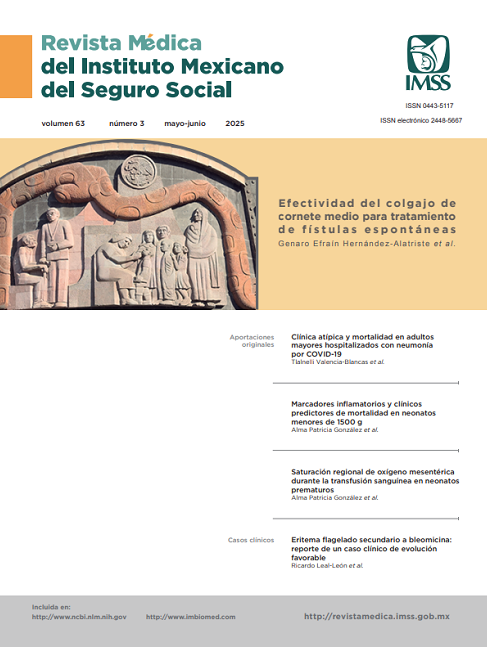Reflection and opportunity: Circular economy and health in Mexican public sector
Main Article Content
Keywords
Circular Economy, Health Sciences, Health Care Sector
Abstract
The paradigm of complexity establishes links between health and economy which enable opportunities to reflect on current theoretical trends and practical cases, existing in the Mexican public sector. With the aim of contributing to such reflection, this document makes a theoretical review of the term circular economy, mentions some examples published in international literature, and points out similar Mexican cases under development, which have not been proposed from a health and economics transdisciplinary vision. In the context of this scientific journal, targeted for health professionals, it is deemed relevant to induce new conversations that encourage establishing links with other sectors to enrich medical practice and scientific research.
References
Kirchherr J, Reike D, Hekkert M. Conceptualizing the circular economy: An analysis of 114 definitions. Resources, Conservation and Recycling. 2017;127:221-32. doi: 10.1016/j.resconrec.2017.09.005
Korhonen J, Honkasalo A, Seppälä J. Circular Economy: The Concept and its Limitations. Ecological Economics. 2018;143:37-46. doi: 10.1016/j.ecolecon.2017.06.041
Fundación MacArthur Foundation. El diagrama de la mariposa: visualizando la economía circular. Países Bajos: Fundación MacArthur Foundation; 12 de enero de 2021. Disponible en: https://www.ellenmacarthurfoundation.org/es/el-diagrama-de-la-mariposa
National Science Foundation. Science and Engineering Indicators. Publications Output: U.S. Trends and International Comparisons. Alexandria, VA: NSF; December 11, 2023. Disponible en: https://goo.su/Mp97As
World Health Organization. World Health Statistics 2024. Tables of health statistics by country and area, WHO region and globally. Geneva: WHO. Disponible en: https://www.who.int/data/gho/whs-annex/
Quronfuleh B, Sleath D, Rahimifard S. Circular Economy for Medical Devices: A Case Study of Syringes. Procedia CIRP. 2024;122:449. doi: 10.1016/j.procir.2024.01.065
Rønn C, Wieland A, Lehrer C, et al. Circular Business Model for Digital Health Solutions: Protocol for a Scoping Review. JMIR Res Protoc. 2023;12:e47874. doi: 10.2196/47874
Malik A, Nguyen M, Budhwar P, et al. Leveraging high-performance HRM practices and knowledge sharing for managing technological and social change in emerging market healthcare providers. Technological Forecasting and Social Change. 2024;205:123463. doi: 10.1016/j.techfore.2024.123463
Ranjbari M, Shams Esfandabadi Z, Shevchenko T, et al. Mapping healthcare waste management research: Past evolution, current challenges, and future perspectives towards a circular economy transition. J Hazard Mater. 2022;422:126724. doi: 10.1016/j.jhazmat.2021.126724
Ertz M, Patrick K. The future of sustainable healthcare: Extending product lifecycles. Resources, Conservation and Recycling. 2020;153. doi: 10.1016/j.resconrec.2019.104589


